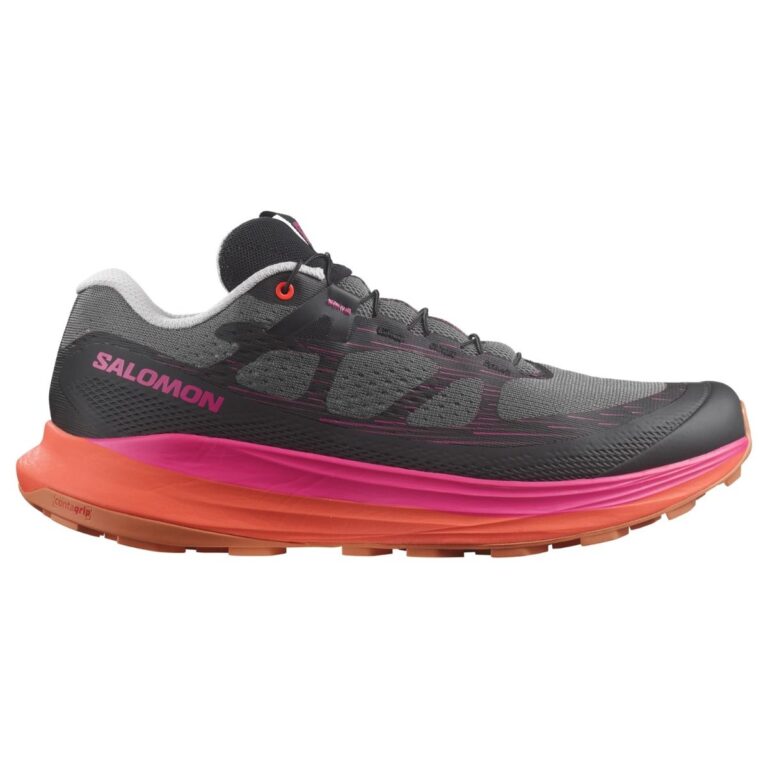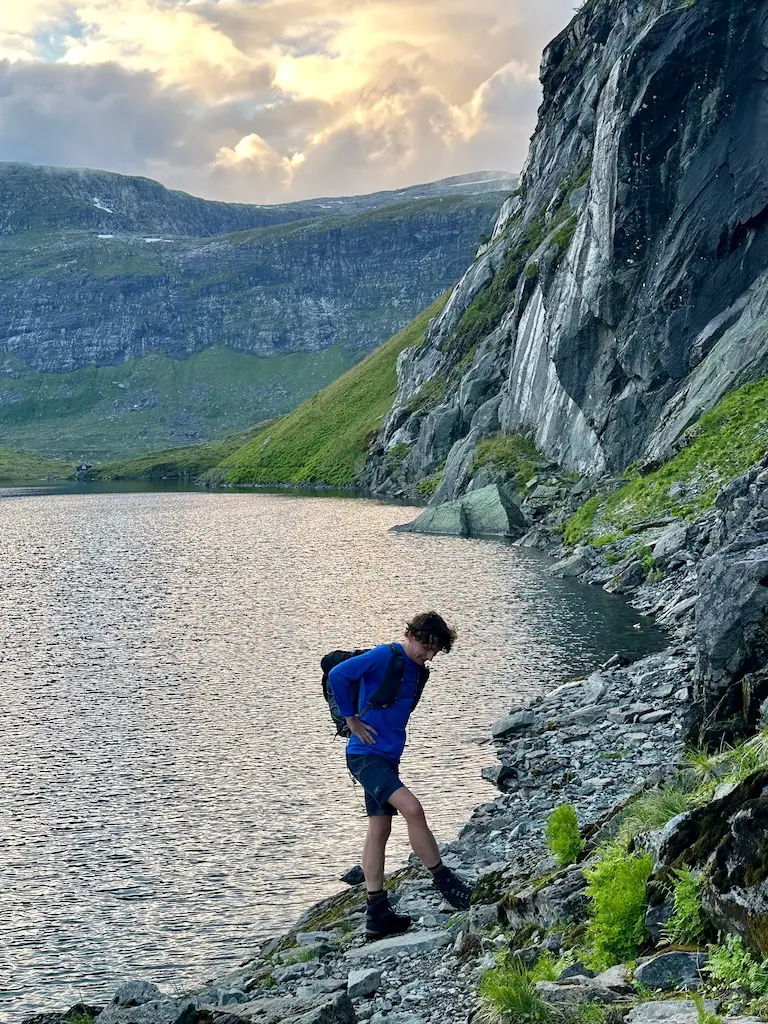TRAIL RUNNING SHOES IN 2024 – WHAT WORKED FOR ME & WHAT DIDN’T
Trail running shoes in 2024? I put them through some serious testing. From technical mountain routes in Norway to long runs across trails, snow, ice, and just about every condition you can imagine, I pushed these shoes to their limits. Some absolutely delivered, while others fell apart faster than I’d like to admit. I even put a few pairs to the ultimate test: race conditions, where every flaw becomes painfully obvious. Here’s my personal breakdown of what worked, what didn’t, and which pairs I’d actually buy again.
As a trail runner based in Oslo, I spend most of my time running in Nordmarka’s technical trails, where wet roots, rocks, and mixed terrain are part of every run. But I also travel a lot – hitting trails across Norway, Spain, Portugal, and beyond. That means my shoe choices need to be versatile, durable, and grippy enough to handle different conditions.👉 Want to see where I run? Follow me on Strava here for my latest trail adventures!
SALOMON S/LAB GENESIS
Official specifications:
Cushioning: Maximal
Shoe width: Standard
Drop: 6 in mm
Running terrain: Mixed terrain
Weight: 278 g
Lug depth: 3,5 mm
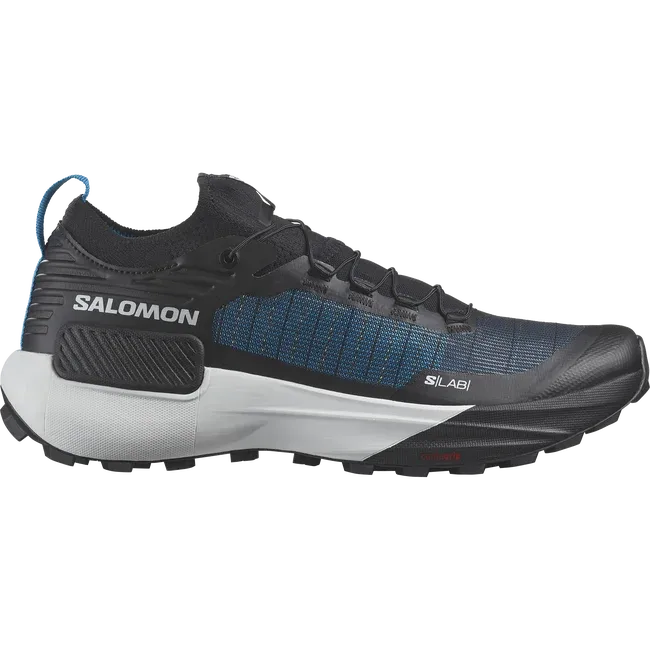
🏃🏼♂️Distance: around 2000 km total using 3 pairs
Pair 1: 714 km
Pair 2: 713 km
Pair 3 (Blue model): 450km with noticeably lower durability
✅ Pros:
Super versatile – works for daily training, long runs, and mountain trails
Durable (at least in the first two pairs, not the blue model)
Perfect sock-like fit and excellent secure lacing system
❌ Cons:
Horrible on wet surfaces – slippery and dangerous on wet rocks and roots
The blue version had noticeably worse durability 🤨
Expensive (but can be often found on sale)
➡️ If you want to check them out for yourself, you can find them here
READ MY DETAILED REVIEW OF SALOMON S/LAB GENESIS HERE.
SALOMON ULTRA GLIDE 2
Official specifications:
Cushioning: Maximal
Shoe width: Standard
Drop: 8 mm
Running terrain: Mixed terrain, Rocky
Weight: 258 g
Lug depth: 4.5 mm
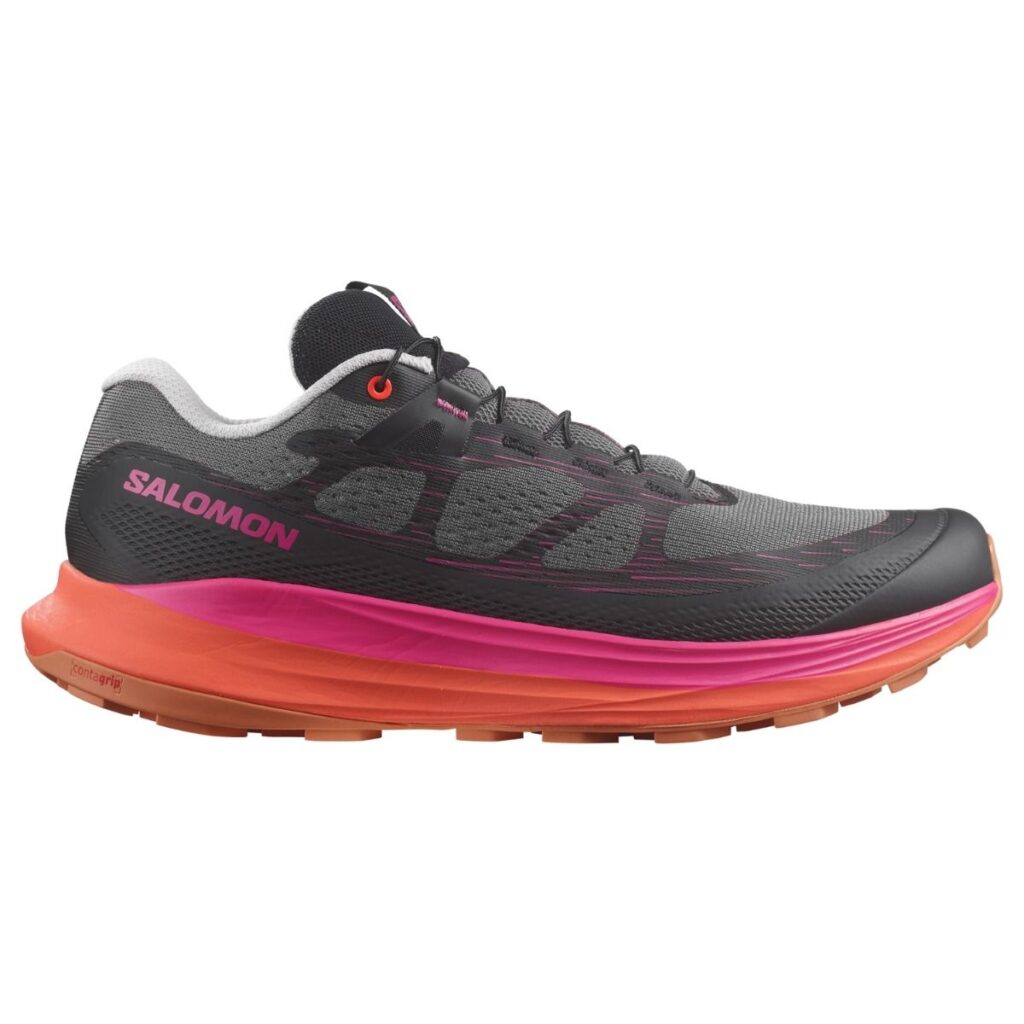
🏃🏼♂️Distance: 647 km
✅ Pros:
Very comfortable, great for long, easy runs.
Great value for money, you can often find them for around 1200NOK/100EUR
Soft and cushioned, making it great for recovery runs
❌ Cons:
Not the best durability (they looked like I ran 2000 km in them after just 500 km
Not great for technical terrain, mainly a gravel/trail shoe
➡️ Check availability and prices here.
READ MY DETAILED REVIEW OF SALOMON ULTRA GLIDE 2 HERE.
ARC´TERYX SYLAN
Official specifications:
Cushioning: Balanced
Shoe width: Narrow fit
Drop: 4 mm
Running terrain: Technical trails, wet conditions
Weight: 275 g
Lug depth: 4.5 mm
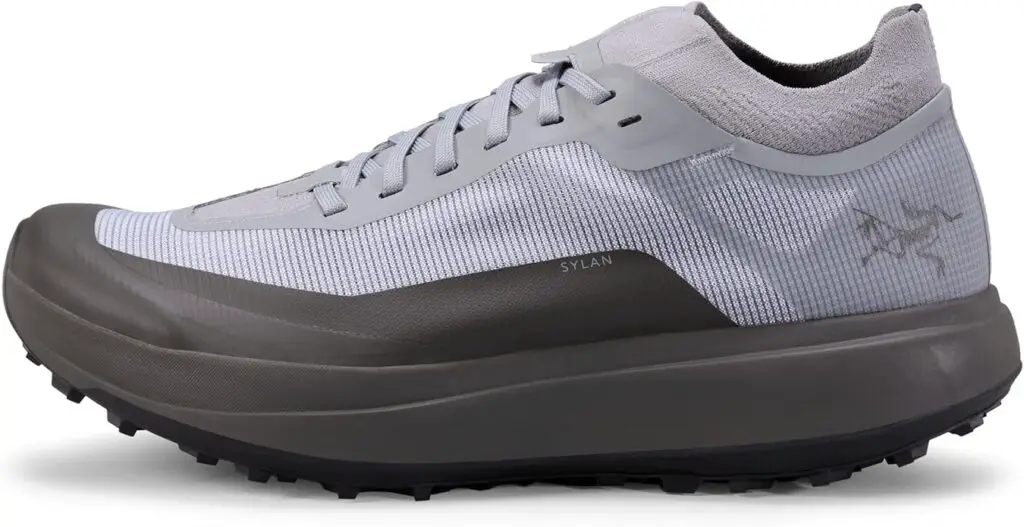
🏃🏼♂️Distance: 50km
✅ Pros:
Vibram Megagrip outsole – insanely good grip, even on wet and icy trails
Secure fit, once you find the right size
Very stable, great for technical terrain
❌ Cons:
Odd sizing (for me) – couldn’t find the right fit
Weird sole design – takes some getting used to the “elevated” midsole
➡️ Check availability and prices here.
Full detailed review will follow shortly.
ARC´TERYX NORVAN LD3
Official specifications:
Cushioning: Balanced
Shoe width: Standard
Drop: 6 mm
Running terrain: Mixed terrain
Weight: 285 g
Lug depth: 3.5 mm
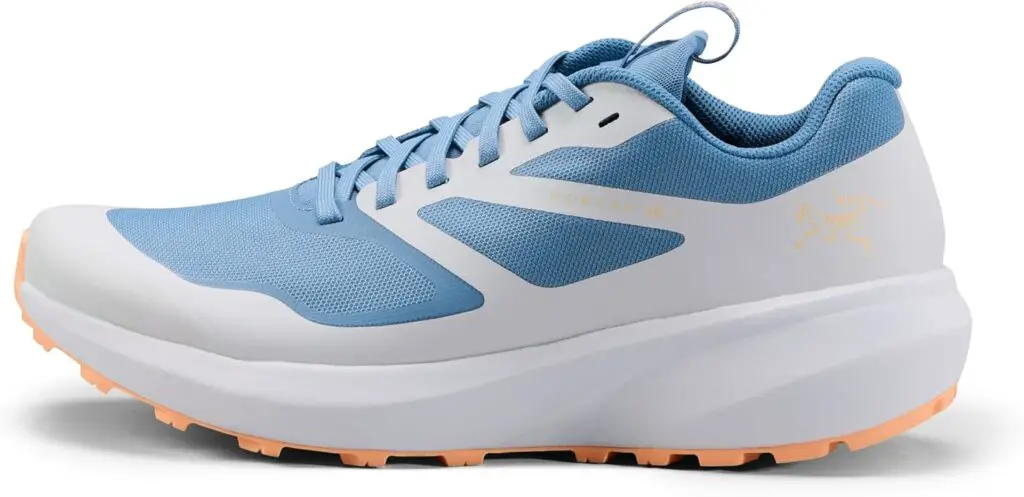
🏃🏼♂️Distance: 400 km
✅ Pros:
Versatile daily trail shoe, handles most conditions well
Fits me better than Sylan Pro
Comfortable for long runs (completed one ultra in them)
Can often be found on sale
❌ Cons:
A bit too tall cut for my ankles, so on longer days they rub against the material
Odd sizing (for me)
➡️ Check availability and prices here.
Full detailed review will follow shortly.
NNORMAL TOMIR 2.0
Official specifications:
Cushioning: Balanced
Shoe width: Standard
Drop: 6 mm
Running terrain: Technical terrain
Weight: 260 g
Lug depth: 4 mm
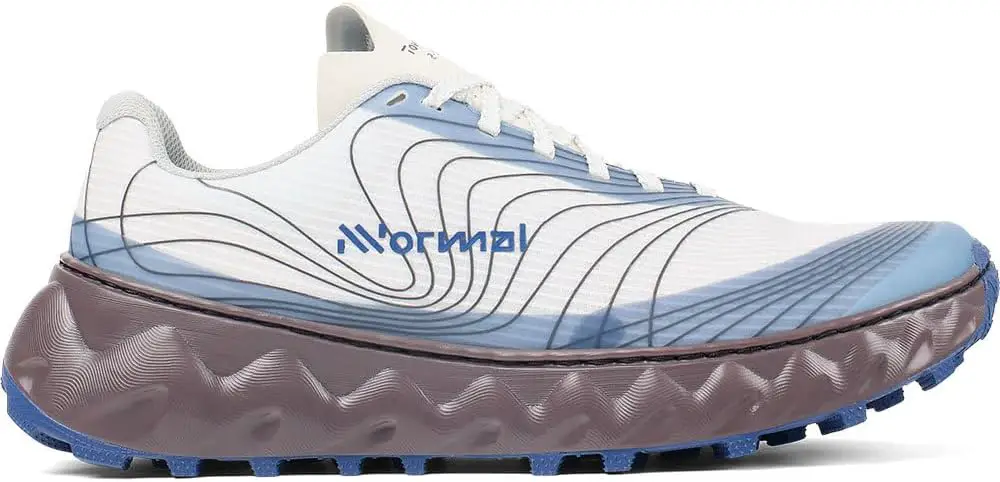
Distance: 45 km
✅ Pros:
Fantastic grip, thanks to Vibram Megagrip outsole
Super lightweight, ideal for mountain races
Stable feel, built for technical running
❌ Cons:
Odd sizing, lost two toenails running Romsdalseggen Race 😅
High stitching around the sole can hurt the side foot
➡️ Check availability and prices here.
Full detailed review will follow shortly.
HOKA MAFATE SPEED 4
Official specifications:
Cushioning: Maximal
Shoe width: Standard
Drop: 4 mm
Running terrain: Technical terrain
Weight: 295 g
Lug depth: 5 mm
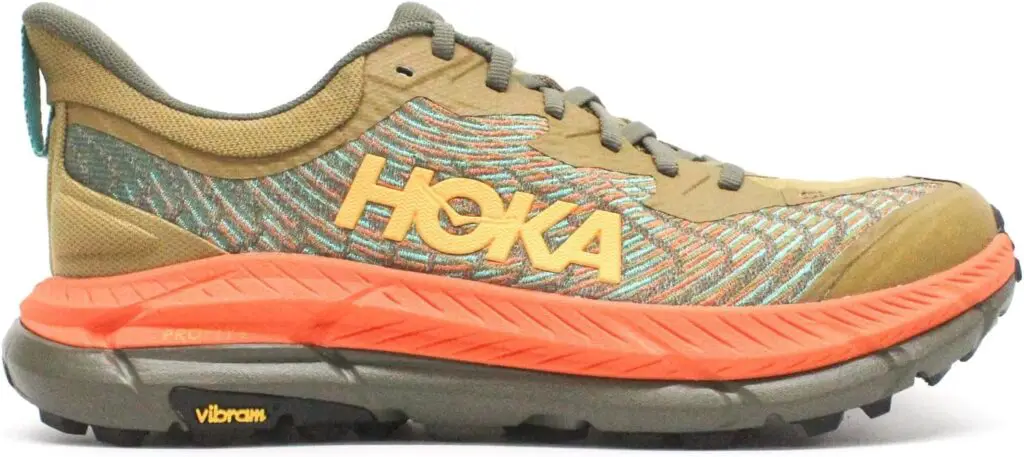
🏃🏼♂️Distance: 300km first pair, currently on my second pair. My favourite shoes today!
✅ Pros:Hands down my favorite technical trail shoe
Insane grip, especially on wet and technical trails
Super lightweight for a max-cushion shoe
❌ Cons:Durability is a question mark, first pair lasted 300 km, but got refunded now testing 2nd pair
Expensive (but can be found on sale quite often)
➡️ Check availability and prices here.
Full detailed review will follow shortly.
HOKA CHALLENGER ATR 7
Official specifications:
Cushioning: Maximal
Shoe width: Standard
Drop: 5 mm
Running terrain: Road-to-trail, gravel
Weight: 280 g
Lug depth: 3 mm
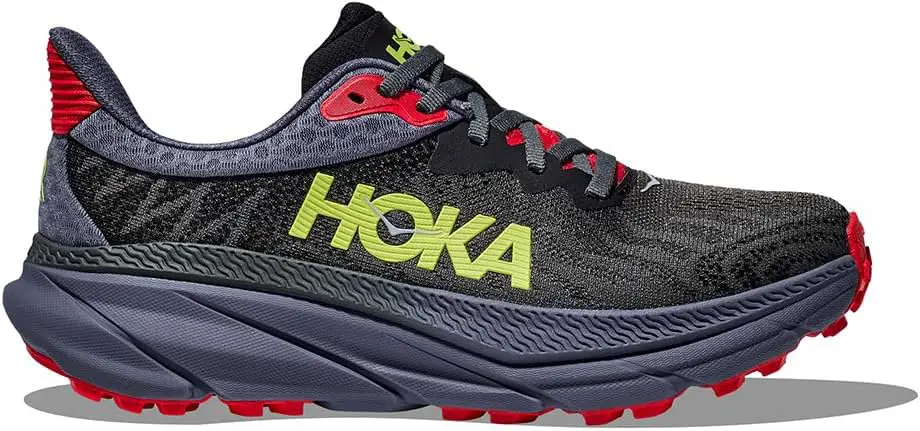
Hoka Challenger 7 ATR
🏃🏼♂️Distance: 430 km
✅ Pros:
Perfect road-to-trail or gravel shoes
Extremely cushioned, ideal for long easy runs
Still going strong after 400+ km
❌ Cons:
Not the best grip for really technical terrain
A bit too soft for fast-paced efforts
➡️ Check availability and prices here.
Full detailed review will follow shortly.
FINAL THOUGHTS
Trail running shoes can make or break your experience, and after testing all these pairs across thousands of kilometers, I’ve definitely found my favorites.
For me, Hoka Mafate Speed 4 is unbeatable on technical terrain, while Hoka Challenger 7 ATR remains my go-to for versatility. Salomon S/Lab Genesis held up well (minus that weird blue version), and Arc’teryx Sylan and Norvan 3 had insane grip and great versatility, just wish their sizing wasn’t so tricky.
What’s been your top trail running shoe in 2024? Drop a comment and let’s talk gear!
Follow me on social media for more running tips, gear deep dives, and trail inspiration. See you out there!
Happy running and hiking!


